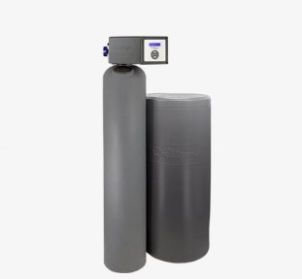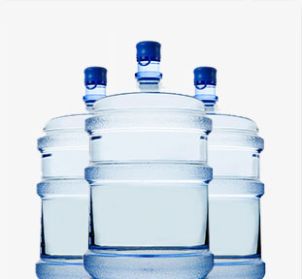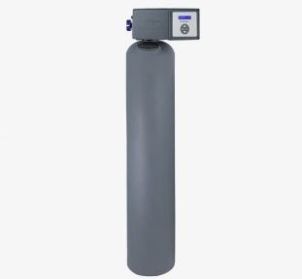
FAQ: Are There PFAS in Bottled Water?

Although drinking water quality has always been important, it’s a particularly hot topic these days — especially as researchers learn more about PFAS, sometimes called “forever chemicals.” These substances have been found in soil, water and living organisms around the world.
To avoid the potential health risks, some people have tried switching to single-serve bottled water. Unfortunately, that’s not necessarily an effective solution. Experts have found PFAS contaminants in this bottled water, too.
Here’s what to know about PFAS in your single-serve water bottle: why it may be there, what to do about it and what else you should know to protect yourself from exposure.
Problem: PFAS in Bottled Water
If you’ve been following the latest PFAS information, news and research, it might not come as a surprise that these long-lasting chemicals have spread to single-use bottled water. Let’s take a look at three questions that help break down the situation:
How Do We Know?
Firstly, it’s important to know that there are thousands of potentially toxic chemicals in the PFAS family. This is one of many reasons the substances have proven difficult to research — and why experts are just starting to find out the extent of the problems we’re facing.
In 2021, Johns Hopkins University researchers published the first large-scale peer-reviewed investigation of PFAS in U.S. bottled water. To run the study, they purchased 101 uniquely labeled types of bottled water from 19 different retail chains, including spring, purified, alkaline and distilled water. Their research found PFAS in 39 bottles (about 39% total), including at least one water sample that contained 15 of 32 tested compounds.
In an analysis of the research, Consumer Reports notes that purified water tended to contain less PFAS than spring water. The organization also did its own study the year before, testing 47 bottled waters and finding that most samples in both carbonated and noncarbonated varieties had measurable PFAS levels.
How Did It Happen?
To understand how these substances got into your bottle, it’s necessary to take a step back and look at the water source.
Many bottled water brands use the same sources as public water systems – about 25 percent – and the rest comes from natural sources like lakes, springs, and rivers.The problem is that PFAS substances also can be found in or around these areas.
That’s because manufacturers have used forever chemicals in consumer products since the 1940s. Originally valued for their longevity and durability against heat, water and more, these chemicals have now proven difficult to eliminate — and, worse yet, are capable of staying in natural systems for hundreds or thousands of years.
Simply put, we may have lost the fight against PFAS pollution before we even realized it was a problem. The good news is that we’re learning more about how these chemicals impact human and environmental health, creating multiple options to identify, reduce and avoid PFAS exposure.
What Does This Mean?
When viewed together, all of this information tells a clear story: There’s more to learn about forever chemicals in single-serve water, but it’s safe to assume that there’s at least a chance of PFAS contamination. If you want to avoid forever chemicals, single-use bottled water products aren’t the best answer — but your tap water might be (with a few conditions).
Solution: Reverse Osmosis for Tap Water
It’s important to remember your home’s drinking water supply likely comes from a groundwater or surface water source that may already be exposed to PFAS contamination. This means you can’t just turn on the tap and say you’re avoiding forever chemicals because you put down the single-use bottled water.
Instead, you need to take an extra step to protect your water quality — and that’s where water filtration comes in.
One option is reverse osmosis filtration. Sometimes called RO, this water treatment process can protect againsta huge range of issues, including those that introduce unpleasant odors, odd tastes and potential health concerns. With the right additional stage of filtration (like Cullian’s Total Defense cartridge),, a reverse osmosis system can also help address emerging contaminants like PFAS chemicals. Make sure to look for a system that is third-party certified for PFAS reduction.
Better yet, it’s easy to get started. Culligan’s low-cost PFAS test kit allows you to take your own water sample in just a few quick steps — or have your local Culligan expert do it as part of our in-home water test and consultation. Within 10 business days, you’ll have a comprehensive report of potential PFAS concentrations in your tap water.
Once you get your report, you’ll have all the information you need to take the next steps. Your Culligan expert will be in touch with personalized advice and recommendations, helping you choose the right reverse osmosis system for your water quality goals. That means you can have a virtually limitless supply of filtered water whenever you need it — all without worrying about high PFAS levels.
Learn more about our RO drinking water filtration systems.
What About Other Solutions?
Popular solutions like basic pitcher or fridge filters often are not designed to address these hardy substances. However, another option in addition to reverse osmosis system is a whole house PFAS filter certified to NSF Standard 53 for Total PFAS reduction.
A Quick Look at PFAS Chemicals in Water
Want to brush up on the latest PFAS information? Here’s what you need to know about these chemicals:
What Are PFAS?
PFAS are a family of chemicals broadly called per- and polyfluoroalkyl substances. These forever chemicals are made of a chain of carbon and fluorine atoms. Because the bond between these carbon and fluorine atoms is one of the strongest ever created, these chemicals do not degrade in the environment.. Although the most common are PFOA and PFOS, other members of the family include:
- PFBS
- PFDA
- PFHpA
- PFHxS
- PFNA
This is part of the reason PFAS have been so difficult to research and manage: We’re really trying to learn about thousands of different chemicals, not just one.
Where Can You Find PFAS?
After decades of utilization in consumer products and manufacturing, PFAS have been found just about everywhere. This includes:
- Drinking water: Public water systems, private wells and single-serve bottled water may contain these chemicals.
- Soil: The earth near landfills and waste disposal sites is particularly likely to contain PFAS.
- Food: The plants you eat can be exposed to PFAS through soil and water. Similarly, animals and their milk can be impacted by forever chemicals in their diet or environment.
- Products: Everything from firefighting foam and nonstick cookware to dental floss and shampoo may contain PFAS.
- Humans: To gauge your exposure from all of these sources and more, you’d need to measure PFAS levels in your blood.
How Do PFAS Impact Human Health?
Although research is ongoing, there’s plenty of evidence that forever chemicals can be harmful to the human body. According to the U.S., Environmental Health Agency, potential effects could include:
- Increased risk of cancer
- Increased cholesterol levels
- Developmental delays or effects in children
- Reduced vaccine responses
- Decreased fertility
It’s also important to understand that there are thousands of PFAS compounds, numerous types of exposure and plenty of interactions we don’t understand yet — not to mention the possibility that these chemicals could impact people differently at each life stage. With so many variables, it’s difficult to say exactly how PFAS might impact each individual.
Are PFAS Regulated?
Recent PFAS regulations in the U.S. have paved the way for increased scrutiny in Canada and beyond, but there’s still a lot of work to be done before you’ll see any direct impacts at the tap. Per the new U.S. rule, public water utilities have five years (from the regulation’s establishment in 2024) to address PFAS: three to test for PFAS, and another two for treatment. Additionally, as with all drinking water regulations, private wells are not covered..
What Are We Learning About PFAS?
There’s still a lot to learn about PFAS. For example, experts are still trying to measure just how many people are exposed to forever chemicals, in what amounts and how this could affect our lives in the future. We also don’t have a lot of information about how to best manage and dispose of all the PFAS compounds or how they impact natural environments, systems and organisms.
Avoid PFAS in Drinking Water
If you want to reduce your PFAS exposure, switching to single-serve bottled water isn’t the solution. After all, studies have found that even a single sip could contain multiple forever chemicals. Instead, you need to focus on testing and improving your home’s drinking water quality — that way, you can take control of what’s in your glass.
To take the first step, learn more about Culligan’s PFAS water testing and certified PFAS filtration systems today.
Related Articles
How To Avoid Microplastics in Water
7 min read
Does Boiling Water Remove PFAS?
7 min read
What is PFAS Water Testing?
11 min read
Related Tags
Find A Location Near Me

Schedule Your Free
In-Home Water Test
Get better water in your home by scheduling an appointment with your local Culligan Water Expert.
Discover More
See All Articles

How To Avoid Microplastics in Water
Here are our top tips for avoiding microplastics in your drinking water.
7 min read

Explore

Explore
Our Products

Water Softeners
With any of our soft water systems, get more out of your water-using appliances while spending less on energy and detergent.
View Products

Water Delivery
There’s never been a better time to enjoy the convenience of scheduled bottled water deliveries from the Culligan® Water Experts
View Products

Water Filtration Systems
Culligan's water filtration systems have improved water quality for thousands of families worldwide.
View Products
